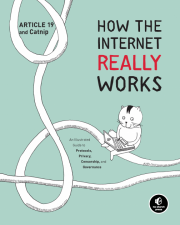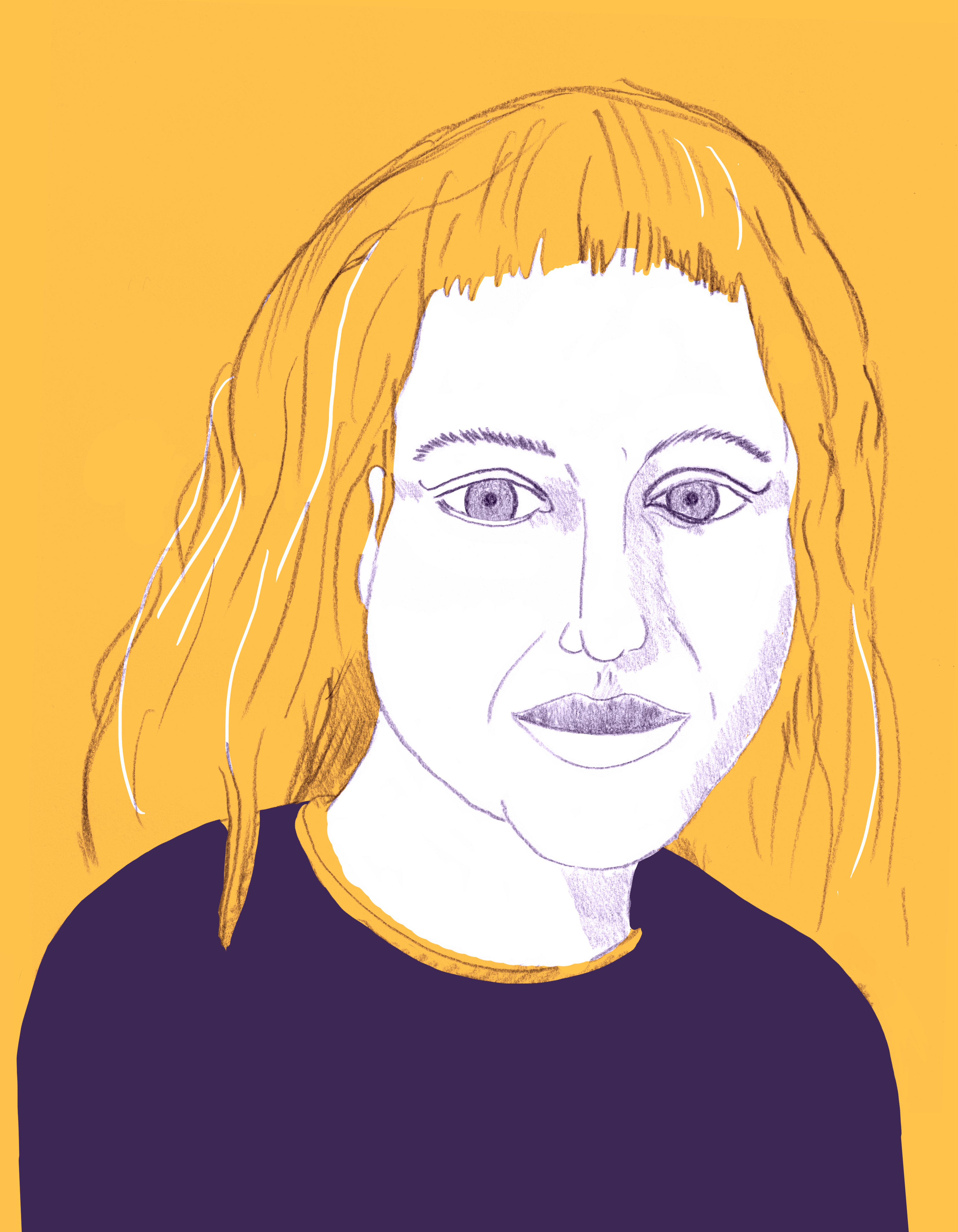For Women’s History Month, No Starch Press is spotlighting the contributions and individual achievements that female authors have made in the world of tech and on our bookshelves.
This week, the focus is on two of the co-authors behind How the Internet Really Works (Dec. 2020), a collaborative work produced by Article 19 activists. Mallory Knodel is the CTO of the Center for Democracy & Technology, co-chair of the Human Rights and Protocol Considerations group of the Internet Research Task Force, an advisor to the Freedom Online Coalition, and former head of digital for ARTICLE 19, where she integrated a human rights-centred approach to communications and technology work for social justice movements. Ulrike Uhlig is a (comic) artist, graphic designer, front-end web developer, and Debian Developer. She works with non-profit organizations at the intersection of technology, arts and human rights.
No Starch Press: You both work in technology and human rights – and gender equality is one of the most fundamental guarantees of human rights. Given that ICT is an area where women commonly experience discrimination, exclusion and harrassment, what role does internet governance and/or protocol standards play in achieving a more equitable and inclusive global cyberspace?
Mallory Knodel: Gender discrimination is present in internet governance, too. That is to say that, while setting standards and building governance mechanisms presents the opportunity to provide guidance on best practice, efforts to address inequality are undervalued. Rather than getting trapped in the endless loop that starts and ends with the demographics of participant data, there are two things that should be ubiquitously understood by now: 1) inclusion is everyone’s responsibility, and 2) participation is, in some part, related to interest. I hope that my work on human rights and the public interest in standard bodies and internet governance is sufficiently interesting to attract experts who are also feminists, anti-racists, and social justice advocates.
NSP: Your work has brought attention to the theme of the “digital gender divide.” How does gender affect the way women access, use the web, and benefit from internet technology?
MK: The digital gender divide is the result of compounded inequalities that all derive from access to the internet. There is inequality in access to literacy, devices, mobile data, in-home internet subscriptions, information that is censored, paywalled, filtered, and blocked. On the other hand networked mobile devices can exacerbate stalking, police surveillance, harassment, and economic harms such as theft and private data brokerage. At the same time, the offline world of bookstores, government services and public spaces, is disappearing. For initiatives like e-commerce and remote jobs aimed at women to work, ubiquitous, cheap and quality internet access is a fundamental requirement.
NSP: “Alice & Bob” – fictional characters used in discussions about cryptography to make complex concepts more understandable – have been a popular archetype in CS since the ‘70s. But in How the Internet Really Works, you made a conscious decision not to use the “couple” for explaining cryptographic protocols and systems; instead, Alice talks about these topics with a friendly dragon. What inspired you to do this, and what was your intent by recasting “Bob”?
MK: I credit Ulrike with the creative side to our book. She was able to bring to life the everyday objects, characters and mythologies from technology and retell them through her brilliant illustrations of reimagined and more contemporary archetypes.
Ulrike Uhlig: While making the book, we’d come across a very interesting and well-researched work by Quinn DuPont and Alana Cattapan: “Alice & Bob. A History of The World’s Most Famous Cryptographic Couple.” There we learned, for example, that Eve, the person who listens to, and eventually tampers with Alice and Bob’s conversations has sometimes been depicted as Bob’s rejected ex-wife, and that Alice and Bob are not only longer names for representing “A” and “B” (in cryptographic transmissions) but we understood there was also an assumption of their role, related to their gender. We found this to be a bit too heteronormative. We want all sorts of people to be able to identify with our characters, and to, sort of, pass the (non-existing but self-imposed) Bechdel test for books.
However, when writing the text for our book, we noticed that there seemed to be one advantage to using gendered characters – it makes it a little bit easier to explain complex systems, because we can use two different pronouns so readers can more easily follow who is doing what. At first, we had the idea of simply inversing the assumption that Bob is a man and Alice is a woman, and wanted to call those characters “Aob and Blice.” Later we had the idea that Alice could just be talking to her friends, Catnip and Dragon – like, that we accidentally got rid of her assigned role as Bob’s partner. Finally we realized that we didn’t need to use gendered pronouns to make the text easy to understand, we could simply repeat the characters’ names.
Actually, creating the characters of our book has been a challenge for similar reasons. While we knew from the start that we wanted the main character to be a cat by the name of Catnip – an acronym for Censorship, Access, Telecommunications, Networks, and Internet Protocols – we initially thought our secondary characters would be the commonly used ones for explaining cryptography. When we did the first sketches though, it became clear that it would be hard to be inclusive and diverse using “human” characters. So we turned to the imaginary animal world to represent Eve, Mallory, and Catnip’s friend, Dragon. There is now only one human character in How the Internet Really Works who has a name: Alice. With the image of Alice, I encoded a bit of ourselves – women in tech – into the book.
NSP: Women were key to the development of computing in its early history. But in the decades since, they’ve been increasingly marginalized throughout the industry. Are there any notable actions being undertaken right now to help solve the persistent problem of gender inequality in tech and governance?
UU: That’s a good question. I have the impression that ever since I started working in tech, this question has been turned into all possible directions, with a bit of change, but not significant enough change that I would call it progress. I personally think that we need to open up the gender inequality discussion and talk about diversity. To me, this means first of all to question ourselves: How do we encode inequality in our systems? How do we (often unconsciously) reproduce patterns of classism, sexism, ableism, racism, and oppression? How are privilege and social reproduction part of our spaces, organizations, perceptions? Those questions are collective ones, not questions that can be solved on an individual level.
We can ask ourselves similar questions about the technologies that we produce. Technologies, such as internet protocols, are inherently political, as they shape how we interact with each other. How do we encode bias and power into those technologies and how can we do it differently? I would even dare to ask: How can we bring empathy into the technologies that we create? To that end, the Human Rights Protocol Considerations Research Group at the IRTF, that Mallory is a chair of, aims at researching whether standards and protocols can enable, strengthen (or threaten) human rights, and therefore gender diversity.



